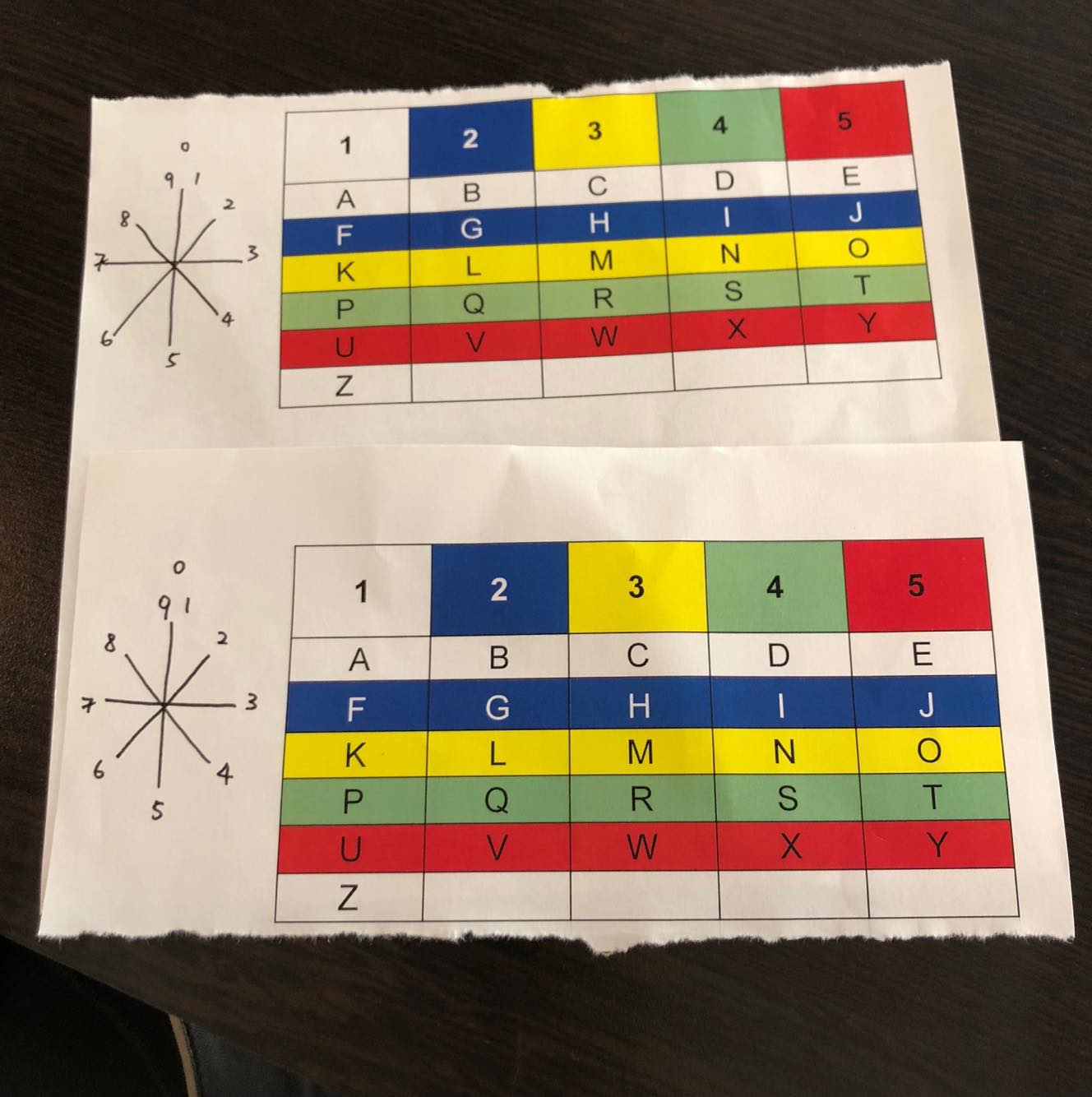We began by thinking of a system that would efficiently encode each letter of the alphabet, and so we settled on the idea of using a string of five papers, with each paper representing a different column number on a 5×5 grid of letters. Each letter would be encoded by its position in the grid. By tapping the appropriate paper along the string, the sender would signal the column number. To indicate which row, the sender would signal a number with their arm. This would give the receiver a coordinate to quickly find the corresponding letter in the grid. The numbers were inspired by their positions on a clock, modified to capture only the numbers 1-9, with 0 indicated by two hands on the head.
Our initial idea looked like this:

However, we realized that from a distance, it would be difficult to see which paper in the string was being signalled. We also wanted to make the system more efficient, after our initial practice attempts using the paper and arm-number method took quite some time to transmit messages. So we modified our system to include colours that would more clearly distinguish each separate column along the string.

We also decided to simplify the grid system by using the same colour sequence for both the row and column positions. In this system, the sender taps the two colours that correspond to the letter’s grid position, with the first tap indicating the row, and the second tap indicating the column. For example, to transmit “A”, the sender taps White then White (again). To send “N”, the sender taps Yellow then Green. (Z was a special character – given its low frequency of usage, we did not fit it on the 5×5 grid. The sender would wave her arms frantically to transmit “Z” if indeed it appeared.)

We also decided to keep numbers separate from the letters for clarity, so we kept the numbers according to the original clocklike positions (although the order would be the mirror image of the above, from the sender’s point of view). A space was indicated by crossing the arms in an X shape.
On the receiver’s end, an arm up signalled that the colour combo was accurately noted. If the combo was unclear (for example, which colour came first), the receiver would roll her arms to signal for the combo to be repeated. Although it took some practice to learn our system, it was fairly efficient once we were both familiar with the colour sequences.
During the actual competition, set up proved to be slightly tricky as the string became tangled. Once the string was set up, however, the system was smooth sailing from there. (I think I was so stressed from the set up that sending the message was a lot easier than I had anticipated). We managed to beat our average rehearsal times of 4:40, by transmitting our message in under 4 minutes.

